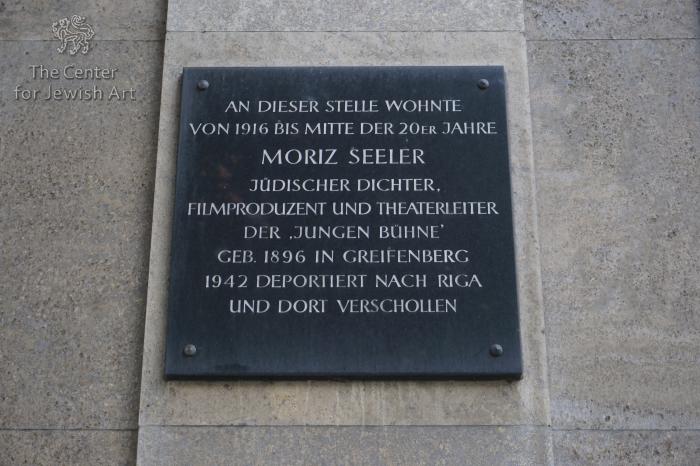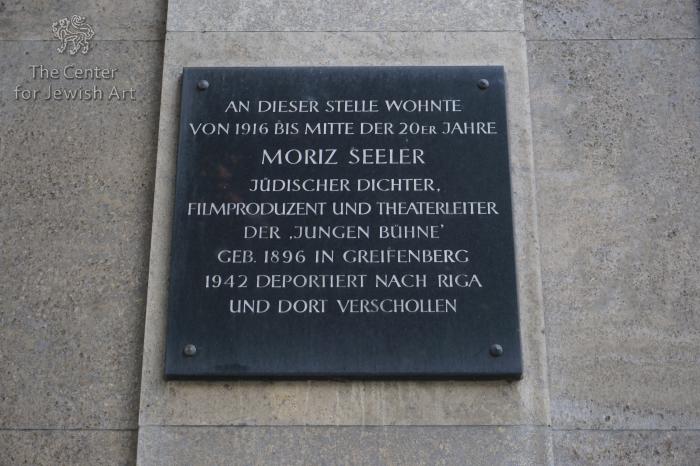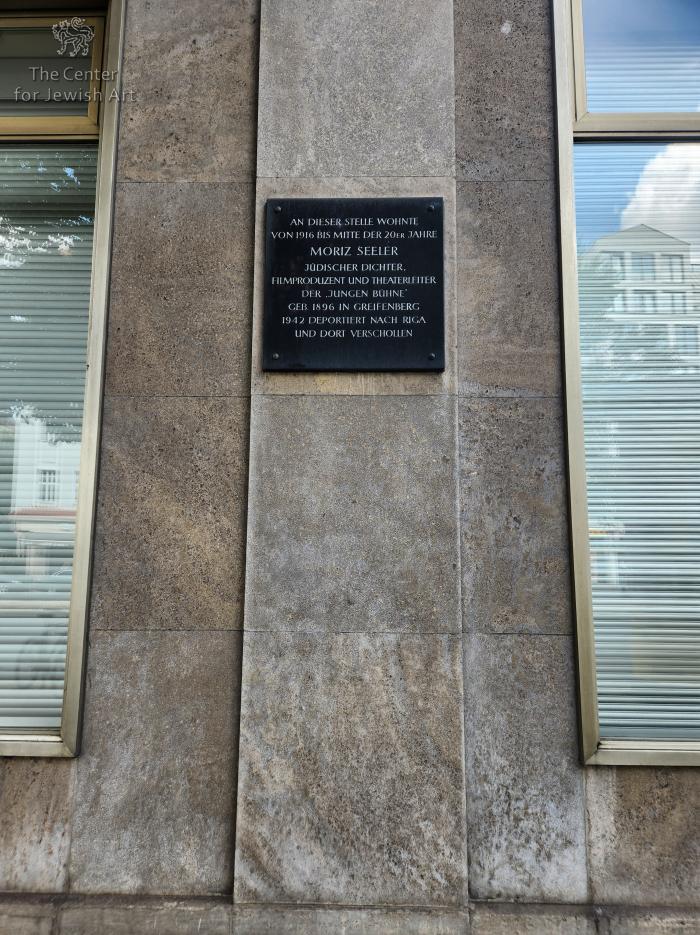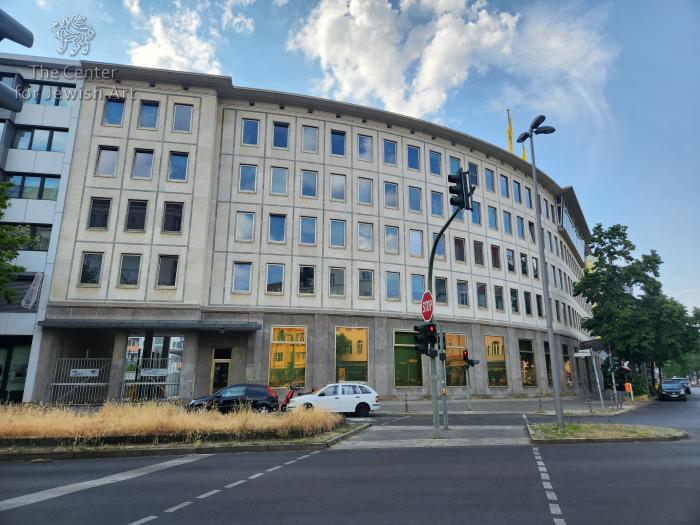Obj. ID: 50314 Moriz Seeler Holocaust Memorial Plaque in Berlin, Germany, 2000

Memorial Name
No official name
Who is Commemorated?
Moriz Seeler
Description:
The almost square black plaque is affixed to the outer wall of a mixed-use building, facing the sidewalk and street. The German text is brief with no symbols.
Inscriptions
German
AN DIESER STELLE WOHNTE
VON 1916 BIS MITTE DER 20ER JAHRE
MORIZ SEELER
JÜDISCHER DICHTER,
FILMPRODUZENT UND THEATERLEITER
DER ‘JUNGEN BÜHNE’,
GEB. 1896 IN GREIFENBERG
1942 DEPORTIERT NCH RIGA
UND DORT VERSCHOLLEN
Translation: Moriz Seeler, Jewish poet, film producer, and theater manager of the 'Junge Bühne', lived at this place from 1916 to the mid-'20s. Born in 1896 in Grifenberg, 1942 deported to Riga and was lost without a trace there.
[Translator's note: The ambiguous term “verschollen,” meaning “missing,” or “lost without a trace,” rather than a more specific term indicating a brutal murder.]
Commissioned by
Undetermined
Seeler was the founder and leader of the “Junge Bühne” (‘Young Stage’), an avant‑garde matinee-theatre begun in Berlin in 1922. In 1927 Seeler co‑authored the libretto to Friedrich Hollaender’s cabaret Bei uns um die Gedächtniskirche rum. In June 1929 he co‑founded (with Robert Siodmak and Edgar G. Ulmer) Filmstudio 1929, a Berlin production house. In 1929–1930 he co‑produced, together with Heinrich Nebenzahl, the silent quasi-documentary film Menschen am Sonntag, directed by Robert Siodmak (1900–1973) and starring Brigitte Borchert and Erwin Splettstößer, which shows a candid picture of life in Weimar-era Germany.
Seeler was deported to Riga, Latvia on 15 August 1942. He arrived on 18 August 1942, with 1,003 other men, women, and children deported from Berlin. Shortly after arrival, all deportees, including Seeler, were executed in the Rumbula and Bikernieki forests.
In 1998 a book about Seeler spurred interest in his fate and is probably the reason for the creation of this plaque. The plaque text mentions Seeler’s deportation to Riga, but it does not say who deported Seeler and why, and that he was murdered with a thousand others upon arrival in Riga.
Günther Elbin, Am Sonntag in die Matinee: Moriz Seeler und die Junge Bühne: Eine Spurensuche (Mannheim, Persona-Verlag, 1998)
“Moriz Seeler,”
Wikipedia, https://en.wikipedia.org/wiki/Moriz_Seeler.












